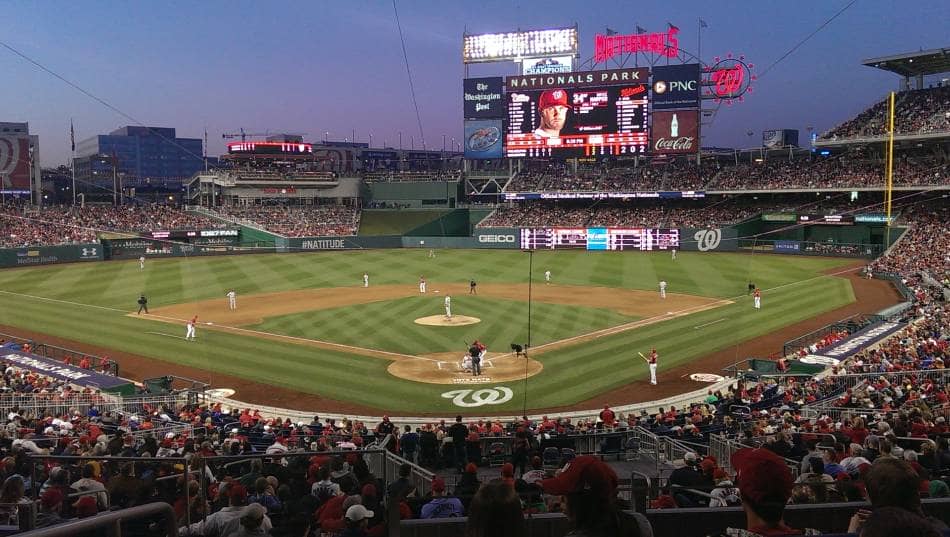
Even if you haven’t watched much baseball, most people know that baseball features nine men on the field. Along with three strikes constituting an out and three outs in an inning, the number of players on the field is one of the few original rules of baseball from 1846 that remain today.
While you probably already knew that there are nine men on the field, you may not know the intricacies of each position or why players are denoted by numbers.
The positions in baseball are pitcher (1), catcher (2), first base (3), second base (4), third base (5), shortstop (6), left field (7), center field (8) and right field (9). The numbers are used for scorekeeping. Additionally, there is the designated hitter who bats but doesn’t play the field.
Throughout this article, we’ll look at the type of player that plays at each position and their role in modern-day baseball. We’ll start by going around the horn, starting in the outfield and working our way to the pitcher’s mound.
Left Field in Baseball
The first stop around the horn is in left field. Along with right field, left field is one of the so-called “corner-outfield” spots.
These positions are referred to as corner-outfielders because they patrol the areas toward the foul lines, including the corners where the foul line meets the wall.
Left fielders typically have average speed and range. For many teams, left field may be the home of the outfielder with the worst arm, though that’s not always the case. Strong-armed left fielders such as Yoenis Cespedes and Alex Gordon are the exceptions to the rule.
For example, of the five players who had the lowest defensive runs below replacement in Major League Baseball in 2019, all five of them saw at least some time in left field.
Additionally, other notoriously poor defenders such as Kyle Schwarber, Nicholas Castellanos and Jose Martinez saw noticeable time in left field in 2019.
Additionally, many players who had sufficient speed to play other positions played left field because they had poor throwing arms. Historical examples include notable speedsters like Juan Pierre, Barry Bonds, and Rickey Henderson.
This is the case because when outfielders throw to bases, nearly all throws go to either second, third, or home.
Because there is no need to make the throw across the diamond to first, and left field is closer to third and home, outfield throws as a whole are shorter from left field, helping to minimize the effects of a sub-standard outfield arm.
At the plate, left fielders typically have above average to excellent power. The primary exception would be the faster players who are in left due to their defensive deficiencies, but as a whole, corner outfielders are expected to hit for power.
To gain a broader idea, MLB teams received an average of 26.5 home runs from left fielders in 2019, the fourth-highest total by position.
Center Field in Baseball
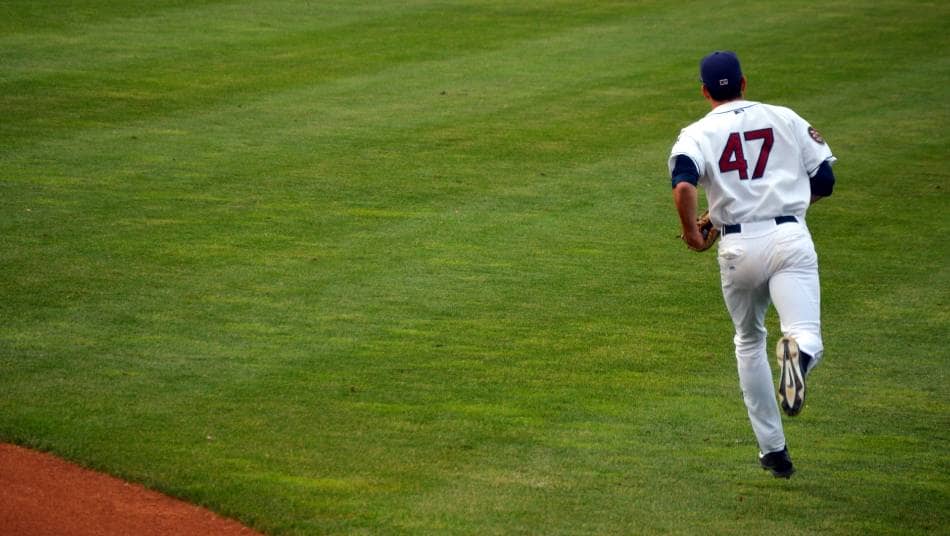
Moving around the outfield, the next stop is center field. Center fielders are often considered the “quarterback” of the outfield. They have authority over the rest of the outfield, and with it, the responsibly of patrolling the largest amount of outfield grass.
Center fielders are in charge of roaming the expanse of grass between the two other outfielders. This includes both the right-center and left-center field alleys.
Additionally, in most stadiums, the deepest part of the ballpark is in center field, meaning that they have more area in front and behind them to cover.
On many teams, the center fielder is the fastest man on the team, or at least has the most range. Additionally, the increase in ground to cover makes a somewhat decent arm a requirement for playing center, hence why some players with sufficient speed but weak arms wind up in left field.
Speed is a premium, and because of that speed, center fielders will run down more fly balls than any other outfielder. Sure enough, according to Baseball-Reference, in 2019 centerfielders ran down 1,800 more balls than right fielders and 2,800 more than those in left.
Naturally, due to the demands of the position, as center fielders age, they typically move to a corner outfield spot.
Because speed and agility are the most important factor in center field, centerfielders tend to be among the smallest players in the game.
In 2018, MLB centerfielders weighed roughly 195 pounds on average, according to a study by Fanatics, the third-lightest position group in baseball only behind shortstops and second basemen.
Consequently, MLB centerfielders had the second-lowest batting average and third-lowest slugging percentage of any position group; the average team also got roughly 23 homers from the position in 2019.
When comparing offensive statistics between each position, we’re excluding pitchers and designated hitters.
Also notable, in an era where stolen bases have continued to decline, centerfielders led the MLB in steals by a wide margin, as nearly a quarter of stolen bases in 2019 came from centerfielders.
Right Field in Baseball
Finishing up the outfield, our last stop is right field. In Little League, the worst kid on the team usually got stuck in right field, though that’s not quite the case in Major League Baseball.
Similar to left fielders, right fielders are known more for their bats than their gloves, but they often possess a valuable defensive skill: a strong throwing arm.
A strong arm is a critical skill due to the vast distance between right field and third base and right field and home, two common destinations of outfield throws.
Not surprisingly, some of the most famous outfield arms, such as Vladimir Guerrero, Ichiro Suzuki, and Roberto Clemente, were right fielders.
Furthermore, in Major League Baseball, right-fielders have thrown out more baserunners than any other outfield position in 10 of the past 12 seasons despite the added degree of difficulty.
Offensively, right field is certainly an offensive position, as the average MLB team received 28.6 homers from right fielders in 2019, hitting the second-most homers, and posting the second-highest batting average and slugging percentage of any position group.
Third Base in Baseball
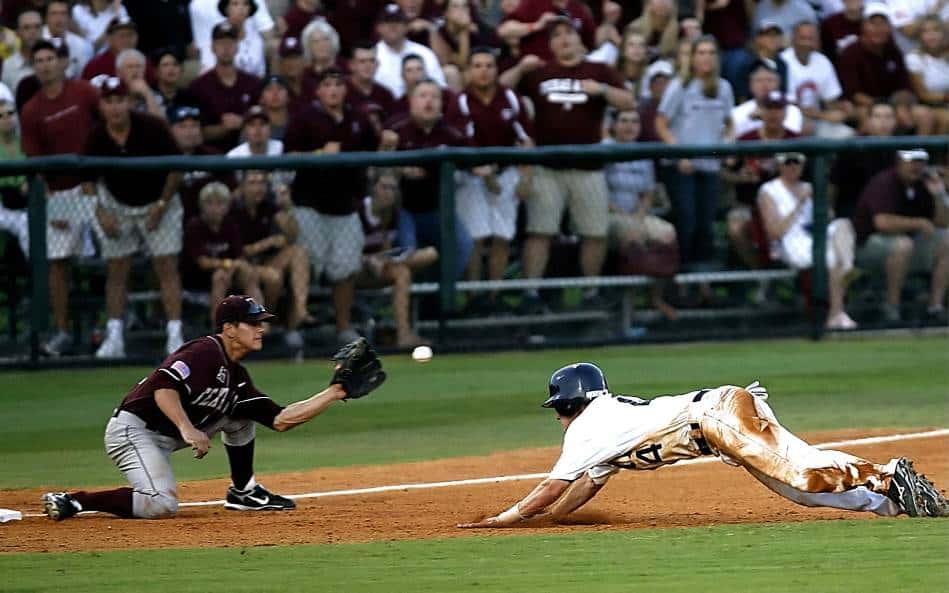
Moving into the infield, next up is third base. Third base, or the “hot corner”, is a unique position that requires quick reflexes and a strong and accurate arm to make long throws across the infield to first base.
The hot corner nickname was coined because of the number of hard-hit balls that third basemen have to field since they are one of the closest fielders to home plate. Plus, first and third base are considered the “infield corners” due to their nature of being on the edges of the infield diamond.
In 2019, third baseman saw the third-most outs hit to them, mainly because the majority of hitters are right-handed, and most of those hitters tend to pull the ball towards left field, leaving the third baseman (and shortstop) in the line of fire.
Because the position values good reflexes, good hands, and a good arm over mobility, third base is considered a much less strenuous position and players can often last longer at third base.
In fact, it is common for many shortstops to move to third base later in their careers as their ranges decline. Alex Rodriguez, Cal Ripken Jr., and Manny Machado are some notable players who slid over to third mid-career.
Additionally, many MLB draft picks who were shortstops as amateurs moved to third base early in their professional careers.
Offensively, third base is another position where most teams prioritize offensive production. In 2019, MLB teams received an average of 28.5 homers from their third basemen, while that group collectively produced the highest slugging average in the majors.
Shortstop in Baseball
From the hot corner, we shift to the middle infield and the home of arguable the most vital defensive position on the field – shortstop.
Shortstops are often the best fielders on their teams and are required to have sure hands, excellent range, and a strong arm.
In 2019, shortstops fielded more batted balls than any position, edging out second and third base.
Because of the emphasis on athleticism, shortstops tend to be, well, shorter, than most positions. On average, they are just over 6 feet tall, the second-shortest of any group, averaging 191 pounds.
Historically, baseball has viewed the shortstop as a defense-first position, meaning that teams have been much more willing to let lackluster offensive production slide.
According to Stathead, using adjusted OPS (On-base plus slugging – measuring overall offensive production relative to the rest of the league in a given year), 12 of the 15 worst offensive seasons since 1901 belong to players who played shortstop as their primary position.
Two of the other three players saw time at short in their historically bad seasons.
Recently, offensive standards have changed with offensive-minded shortstops such as Derek Jeter, Alex Rodriguez, and Francisco Lindor.
In 2019, MLB shortstops posted the highest batting average (.269) of any position group and had the second-highest stolen base total.
On the flip side, they hit the second-fewest homers of any position group, with the average MLB team receiving roughly 22.5 homers from their shortstops in 2019.
Second Base in Baseball
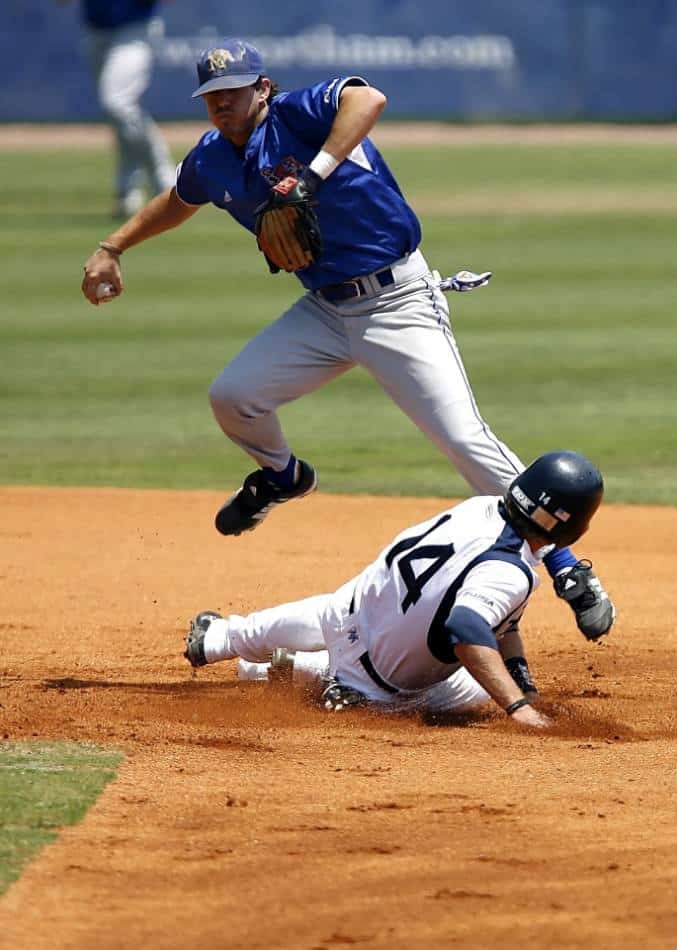
Across the second base bag, second base is also considered one of the most important defensive positions on the field.
Second basemen often have good range and sure hands, similar to shortstops, but usually are a step slower and have weaker arms, making throws to first considerably easier.
According to Baseball-Reference, second basemen fielded the second-most batted balls of any infielder, fielding just under 300 fewer balls in 2019 than shortstops did.
While their role in fielding ground balls is important, perhaps their most important contribution is as the so-called “pivot man” on double plays.
The pivot man is whichever infielder covers second base to turn a double play. Because more ground balls are hit to the left side of the infield, the second baseman is the pivot man more often that the shortstop.
Sure enough, 8 of the 10 highest figures for double plays turned by a middle infielder in a single season belong to second basemen.
Offensively, the group tied for the third-lowest batting average and the second-lowest slugging percentage of any spot in 2019, while hitting the fewest homers of any group, an average of 20.5 homers per team in the 2019 season.
First Base in Baseball
We finish up the infield at first base. First base is often considered the easiest position to play in the field, but also the most demanding offensively.
First basemen fielded the lowest amount of batted balls in the 2019 season, making good hands and range less important than at other positions. The main defensive responsibility for them is to catch the throws coming from other infielders on ground balls.
However, a good first baseman is also flexible, allowing them to stretch further to snag errant throws. Additionally, the best first basemen will also be proficient in scooping low throws out of the dirt, saving his infielders errors.
Usually, they are also the biggest players on the field, as their average size of 6 feet, 2.5 inches and over 225 pounds are the largest in baseball. Naturally, this helps, since infielders have a larger target to hit with long throws across the diamond.
With less defensive responsibility and their larger frame, first basemen are expected to hit much more, and that’s certainly the case.
In 2019, first basemen hit the most homers in baseball, with teams getting over 30 homers a year from the position, while also earning the most walks and RBIs (runs batting in) at any position.
Catcher in Baseball
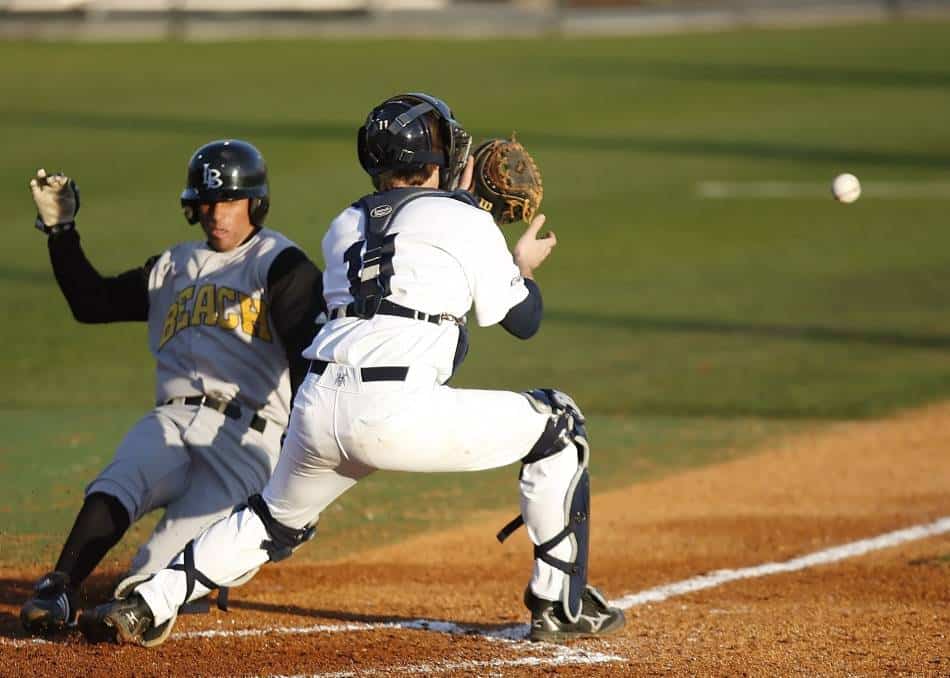
We now move behind the plate, to the most physically demanding position on the field – catcher. Catchers are also more involved in the game than anyone besides pitchers.
Catchers are responsible for calling pitches, ensuring the defense is lined up properly and on the same page, controlling the running game, and serving as a brick wall behind home plate by catching and blocking pitches.
They are required to be durable and strong and are often shorter and stockier, with their average size being 6 foot, 1 inch, and 214 pounds. Good hands, toughness, flexibility, and above all, intelligence are key traits for catchers.
Because of the relative control that catchers have over players on the field, they are often considered to be a coach on the field.
On the flip side, catching is by far the most demanding position because of the constant pressure on knees from squatting, the blows they receive from foul balls, and the balls they have to block to prevent wild pitches.
As a result, their career span behind the plate is rather limited. They also require the most days off, with catchers rarely catching more than 140 games of the 162 games.
Because of the unique skill set and physical demands, strong offensive catchers such as Joe Mauer and Victor Martinez may move to other positions to prolong their careers, while a strong defensive catcher who remains healthy can enjoy a long career, even with limited offensive production.
Catcher is a position that prioritizes defensive skills and durability over any other, so it’s not too surprising that in 2019, catchers posted the lowest batting average, on-base percentage, and slugging percentage of any position group. They also ranked last in stolen bases and tallied the third-fewest homers, averaging just over 23 homers in the 2019 season.
Pitcher in Baseball
We have reached the center of it all: the pitcher’s mound.
The man on the mound, the pitcher, is the most critical element to a team’s success. The pitcher’s mission is straightforward: throw enough good pitches to prevent the other team from scoring.
Of course, the defense behind a pitcher is also critical, but the best pitchers also are capable of inducing weaker contact, (to make defensive plays easier), walking fewer batters, and/or striking out more batters to reduce the number of opportunities for batters to reach base.
Early in baseball’s history, most games had one pitcher pitch the entire game for each team, and it wasn’t uncommon in the 19th century for MLB pitchers to pitch more than half a team’s total innings for a season.
Top pitchers would regularly throw over 400 innings a season, and even as many as 500 or 600 (the MLB record is 680), despite considerably shorter schedules.
However, as rules changed and the game evolved, it became necessary for teams to employ more pitchers. The list of MLB innings pitched leaders reflects this change.
Because of the change in roles, perhaps it would be best to split this category in half to reflect this change:
Starting Pitcher in Baseball
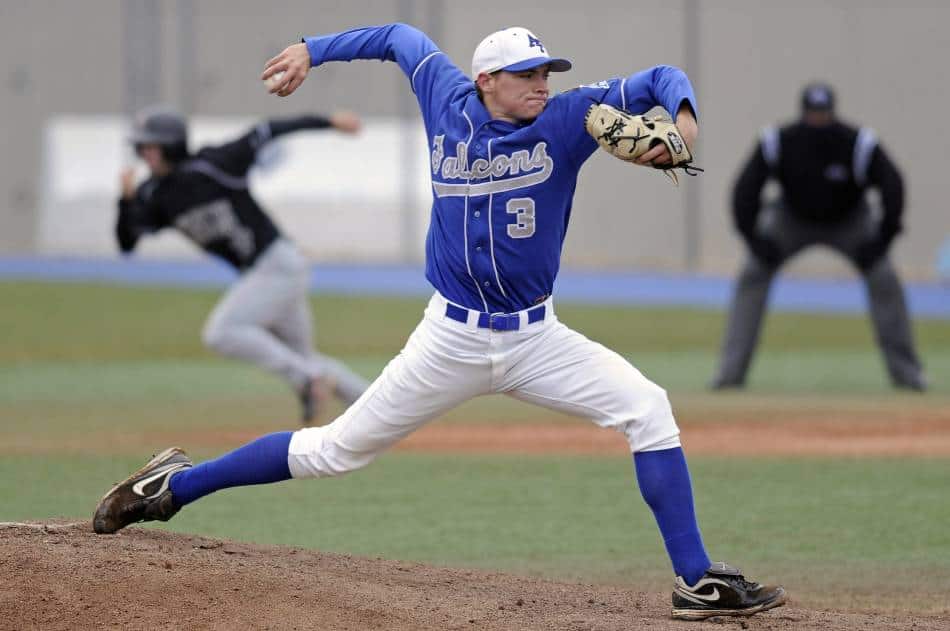
The lion’s share of innings pitched in a season is thrown by starting pitchers. As the name suggests, starting pitchers begin the game for a team and are usually expected to throw several innings.
In modern roles, starting pitchers are expected to throw approximately 5-7 innings of a nine-inning game, and max out at about 100-110 pitches per contest. Because of the physical toll of throwing a baseball, starting pitchers work sparingly.
Most teams employ a five-man rotation, with some teams using a six-man rotation meaning that a starter will typically make 32-35 starts throughout a full MLB season.
The amount of work for starting pitchers has decreased dramatically over the past century. For much of the 20th century, the league leader in innings typically threw 280-320 innings per season until the mid-1980s.
However, as the use of relievers has increased dramatically, fewer pitchers are reaching 200 innings per season.
From 2000-2015, at least 28 pitchers threw over 200 innings each year, while the last four seasons have seen no more than 15 pitchers working at least 200 innings. In 2019, Justin Verlander led the MLB in innings, logging 223.
In 2019, starting pitchers logged 57.9% of their team’s total innings, the lowest figure in MLB history.
Relief Pitchers in Baseball
With starting pitchers working less, relievers have increasingly held a bigger role in recent decades.
Relievers are used in short spurts, rarely working more than an inning or two, and often have defined roles and innings that they work.
Most teams have one or two “long relievers”, who will often enter a game when a starting pitcher is knocked out early and expected to work multiple innings to save other arms. They may also finish games that aren’t close.
Next on the hierarchy are “middle relievers”, which are two or three pitchers on a team that usually work in the fifth, sixth or seventh innings.
These are usually pitchers who go one or two innings to bridge the gap from a starting pitcher to more-reliable late-inning arms.
Over the past few seasons, a few teams, notable the Tampa Bay Rays, have begun using middle relievers as “openers” to begin games for an inning or two, before giving way to a more conventional starter.
Next are “set-up” relievers who primarily work in the seventh or eighth innings, and occasionally will close out games in the ninth. They are almost exclusively-one inning pitchers and most teams employ one or two.
Last up is the “closer”, which is usually the best (and highest-paid) reliever on a team. They almost always pitch in the ninth inning and when their team is tied or has a lead of three runs or fewer, leading to a “save situation“.
Because relievers are deployed in such short stints, they can work much more frequently than starters, including pitching on consecutive days. Top relievers will typically appear in 65-75 games in a season.
Designated Hitters in Baseball
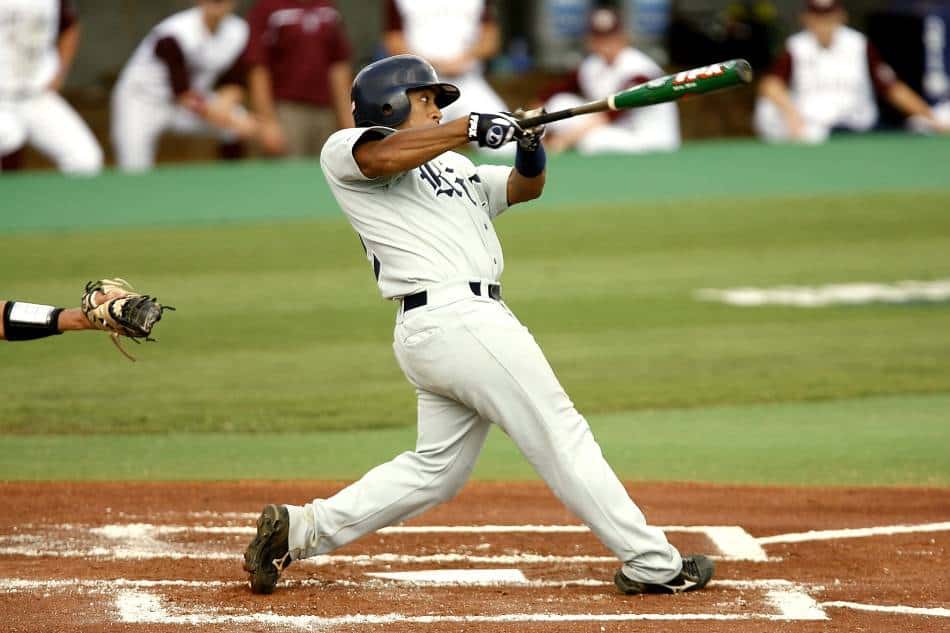
You thought we were done? Well, we’re not, thanks to the newest position in baseball: The designated hitter, or the DH for short.
The designated hitter is a player whose sole job is to hit for the pitcher, meaning that he does not play in the field, and the pitcher does not have to hit.
For over a century, pitchers always hit for themselves. However, because hitting is not their primary job, nearly all pitchers are atrocious hitters compared to their colleagues.
In 1973, the American League grew tired of weak-hitting pitchers in an era of sagging offense, so they elected to not force pitchers to bat and add another legitimate hitter to the lineup. The National League did not wish to add the DH, so they declined, and this status quo remained through 2019.
In 2020, all of Major League Baseball will use the DH as the result of the COVID-19 pandemic, which may be a precursor to its permanent implementation in the National League.
Because the position is based solely on offense, it is often held by players who are poor defenders or aging players who can still hit but aren’t capable of playing in the field regularly anymore.
Other teams don’t employ a full-time DH but simply rotate several players through the position to provide them a so-called “half-day off”.
Position Numbers in Baseball
In baseball, players are numbered 1-9 by position for scoring purposes. What does this mean?
Each position has a number: the pitcher is 1, catcher 2, first base 3, second base 4, third base 5, shortstop 6, left field 7, center field 8, and right field 9.
This system was devised to aid in scoring games in the 19th century.
The reasoning for this is that baseball scorecards were the primary form of logging statistics for several decades. Because of their physical size (a standard sheet of paper), a system of shorthand was devised to make concise scoring possible. This included the numbers.
For example, a groundout to shortstop is written down as “6-3” instead of “groundout SS to 1B.” Also, a flyout to left field is just “F7.” Isn’t that much simpler?
The numbering system runs more-or-less in an S-curve, moving right-to-left across the infield and left-to-right in the outfield. The pitcher and catcher are denoted as 1 and 2 respectively.
It seems simple, but the one odd blip is that shortstop and third base are seemingly flipped so that the infield reads 3-4-6-5. Why is this?
Well, in the early days of baseball, the shortstop operated more as a fourth outfielder who served primarily to relay throws from the outfield.
Hence, they were numbered as an outfielder and the shortstop just kept the number 6 as he gradually became a full-fledged infielder. So that’s a look around at the positions on the field, and what the numbered position system means.
The next time you watch a game, you’ll know why each player is playing where they are.
